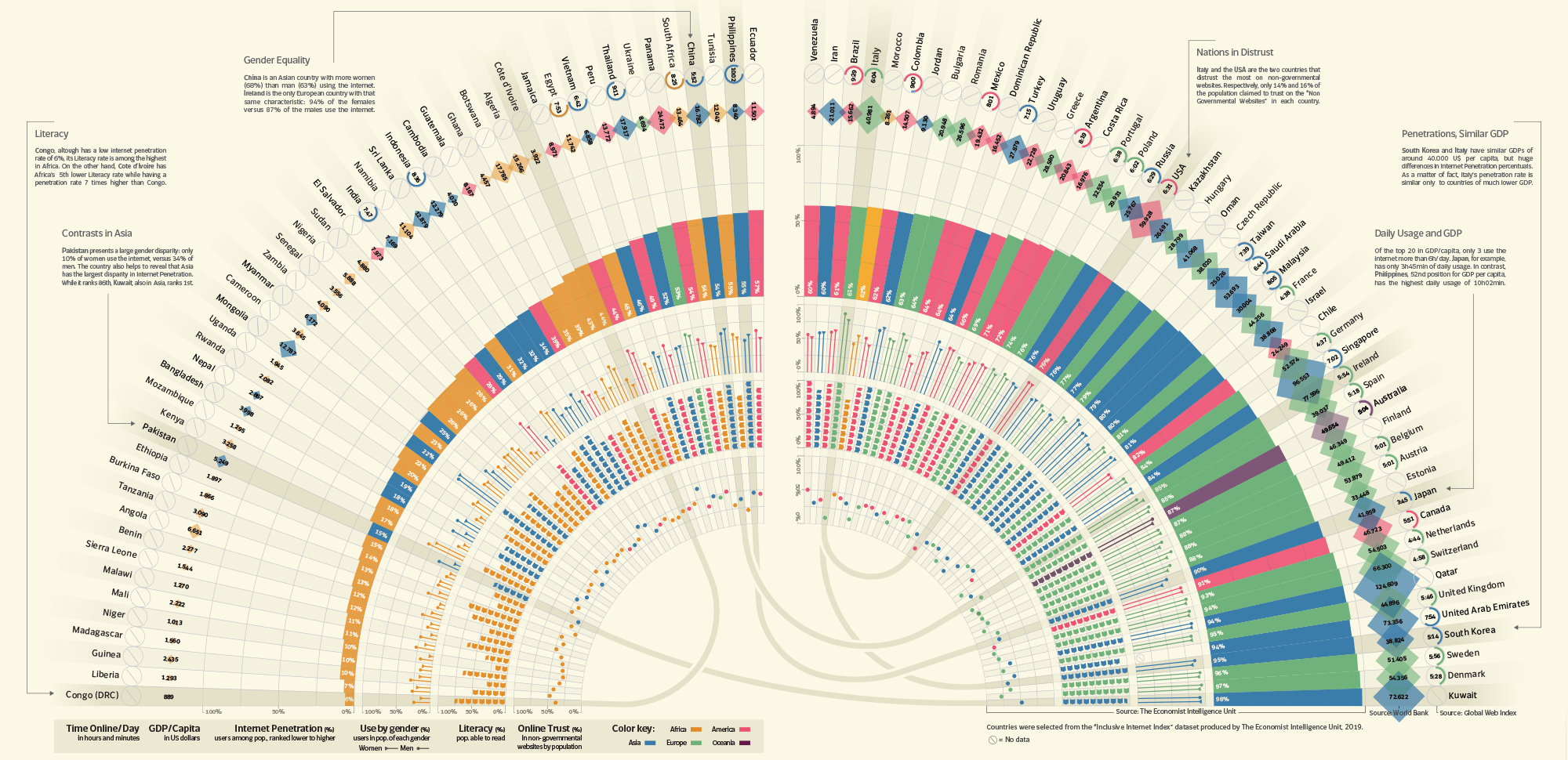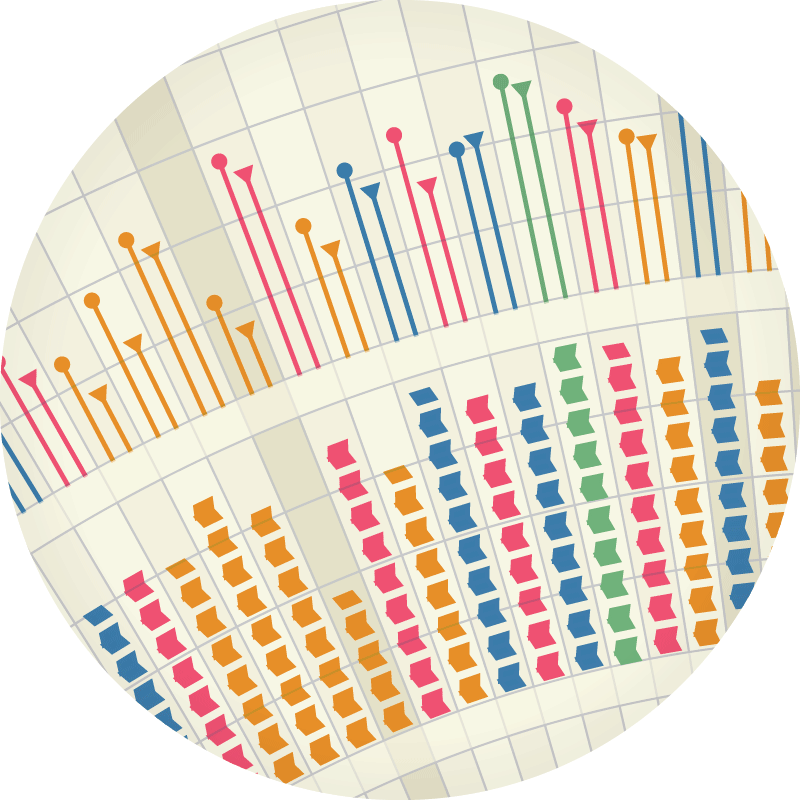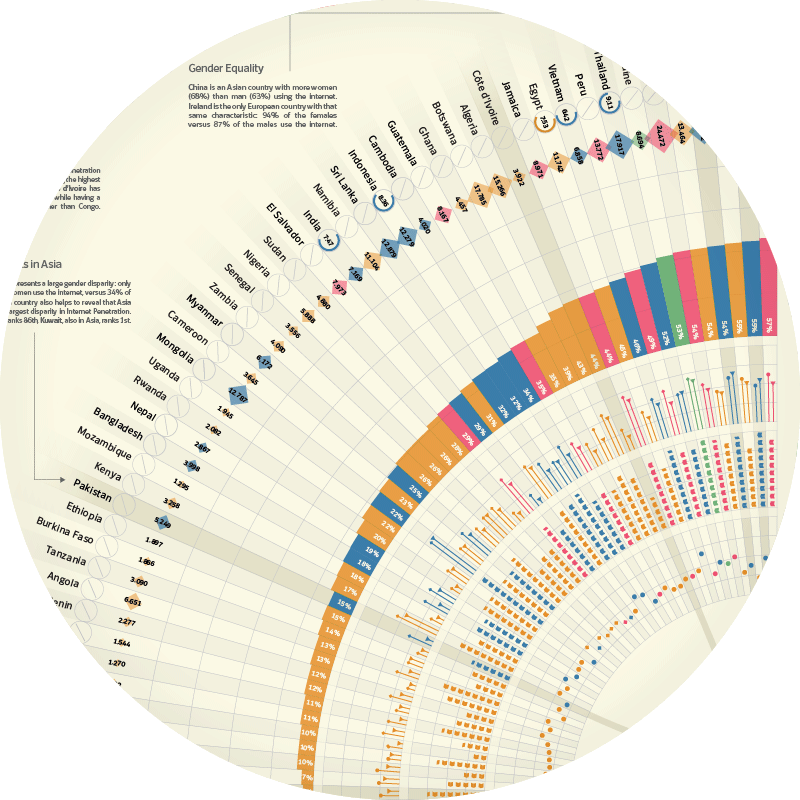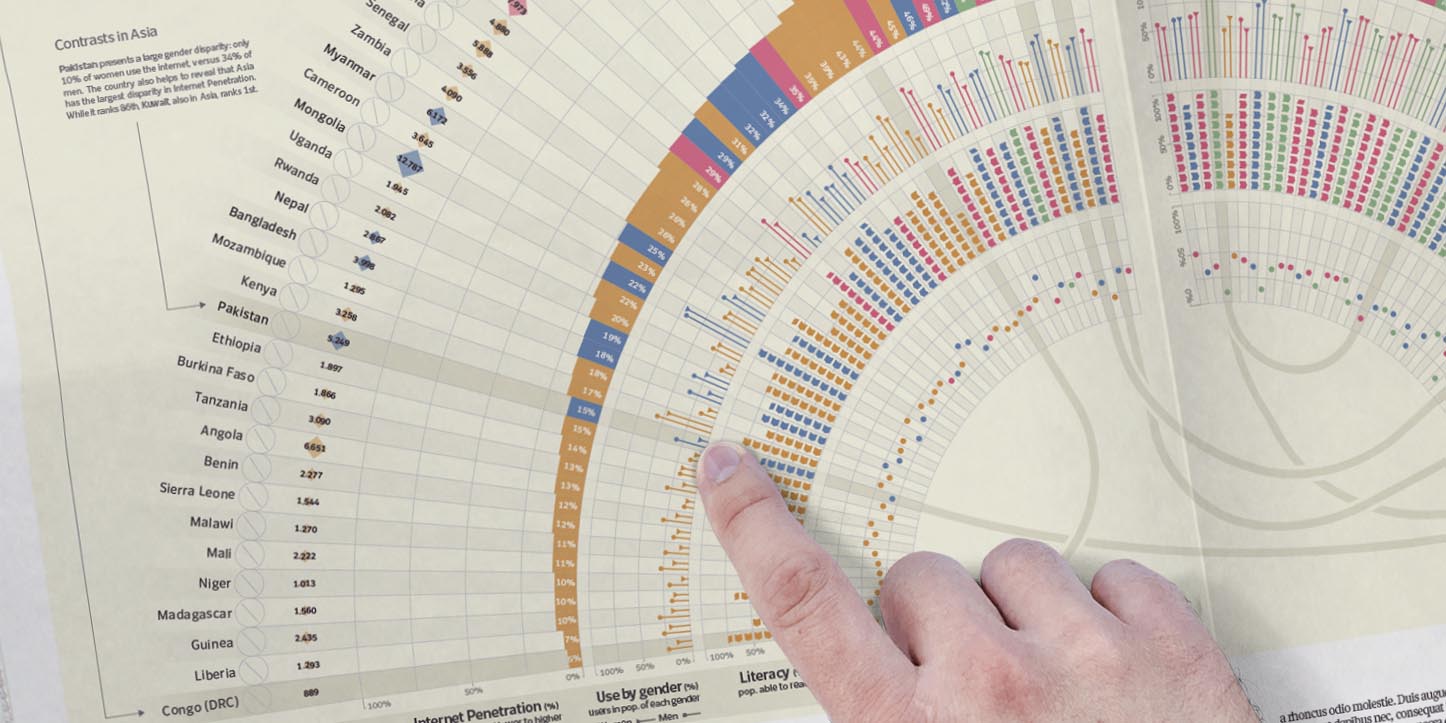(Dis)United Nations of the Internet
Cristina Pita da Veiga, Evansha Agrawal,
Guilherme Appolinario, Maria Almeida,
Natalia Malaver, Rebeca Vittorazo



Datasets
Our main datasets for this infographic were taken from a series of researches made by The Economist Intelligence Unit and complemented with data from the Global Web Index and the World Bank, being the last one dedicated to the
economic side of demographics. There were, in the end, 6 datasets to be visually represented and we chose Internet Penetration as the main one from were comparisons should arise.
Visual Representation
Many ways of portraying that data were experimented. A multi-track arc was the chosen option due to its good coverage of the newspaper space and the possibility to simultaneously present multiple variables by country. The
visual appeal of the shape also comes from its resemblance to the concept of a parliament, reinforcing the idea of a world divided by countries, as is the parliament of the United Nations.
Displaying countries together allows for an overview of how the Demographics of the Internet. At first glance, an ascending "ramp" of the Internet Penetration level is seen. From there, one can dive deeper into the other
variables for each country.


Representing Values

Colors
Continents have different color hues, that vary in saturation and luminosity among each group of data displayed.

Reading and Comparing
The graph can be read left to right, following Internet Penetration growth.
Or from the country name outside to inside, where countries values are.
To enhance comparability, multi-country notes with interesting findings were added, with the countries being linked by lines travelling throughout the arc.
Internet Penetration
Internet Penetration grows with GDP, but some countries are exceptions to this.
Gender
It’s interesting to show that African states show higher percentages of men using the internet, while Europe presents a more balanced yet still unequal view.
Literacy and Trust
We can also find contrasts relating the Literacy of the total population (%) with the Trust in Non-governmental Websites. Generally, countries with less literacy rates trust more in non-governmental websites than those with
higher literacy rates.
